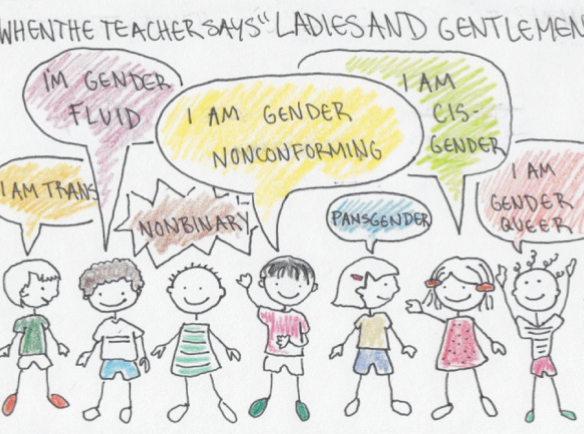Stop misgendering your students

May 27, 2017
While most teachers acknowledge students’ varying gender identities, very few take the necessary steps to ensure that all feel welcomed.
Many of us, mainly those who identify as cisgender, may overlook binary phrases such as “ladies and gentlemen.” However, such terms are exclusive and degrading to non-binary individuals.
Moreover, beyond the binary language, teachers often misgender their students, which makes the students feel like their teachers don’t fully respect them.
In order to avoid misgendering, teachers should find ways to learn and remember the gender identities and gender pronouns of each student in order to promote acceptance and minimize ignorance.
Since facing potentially prejudiced adults can be intimidating, some students may choose to stay silent about their identities. Asking students to mention their gender pronouns in front of the class may arouse discomfort, so approaching the conversation through written assignments may be better.
AP Biology teacher Adriane Slaton asks students to take an online survey beginning at each school year that includes questions about students’ gender pronouns, preferred names, and whether or not the information is public knowledge. After checking in with students to make sure they are comfortable talking about their gender identities, she has all students introduce themselves and share their pronouns with each other.
Another option for teachers who are not accustomed to handing out questionnaires is to encourage students to share their gender identities in an “about me” essay.
Since students may transition during the school year, it is essential for teachers to make it clear that students can talk to them at any point. Slaton suggests that students find other adult allies in the building if teachers do not follow through with using correct gender pronouns or refuse to help in the first place. She also advises that teachers educate each other. This can be done by explaining the processes they go through in order to promote a safe space for students.
Teachers are the role models of the school; they are responsible for creating a safe atmosphere for their students. Instead of leaving the fight for social change to the younger generation of students, each and every teacher should step up their game, and create active dialogue and comfort surrounding the topic of gender identity.
This transition can and should be immediate- there’s not time like the present to create change.









